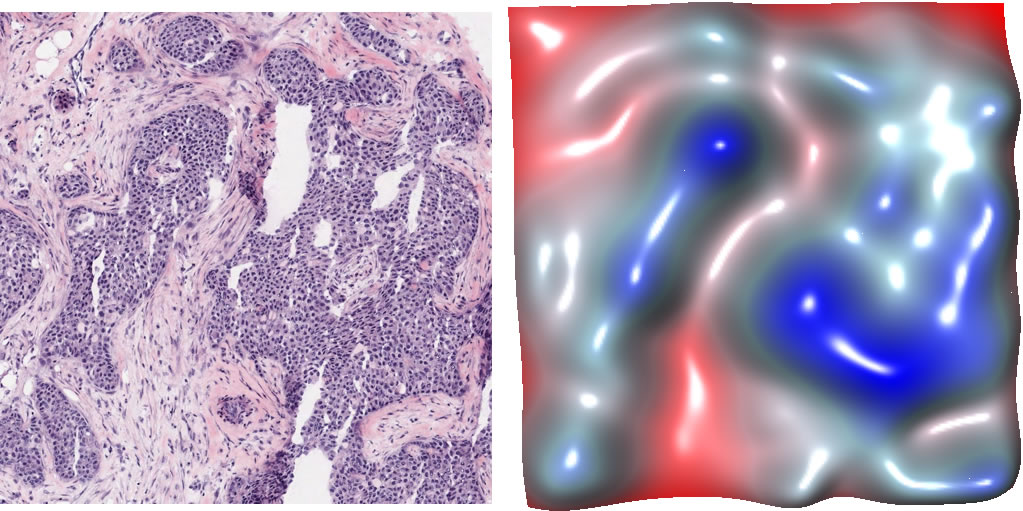The Computational Pathology and Integrative Genomics Team sits within the Centre for Evolution and Cancer and the Centre for Molecular Pathology. The scientists within this team are investigating cancer tissue ecosystems and how selective pressures can promote cancer development. Understanding how tumours adapt to their microenvironment is key to appreciating how they grow and spread, and could direct interventions to alter or stop the selective pressures helping to drive their growth.
As cancer cells all evolve dynamically within the habitats of our tissues on which they retain some dependence, therapeutic regulation of the ecosystem may be a viable alternative to the current notion of trying to kill cancer cells directly - a bit like draining the swamps to get rid of mosquitoes as one way of eradicating malaria.
Such approaches might provide a Darwinian bypass that uses selective pressure on the tumour ecosystem to avoid the problems that drug resistance can bring. In fact doctors can already target the ecosystem, with anti-hormonal therapies (such as tamoxifen for breast cancer), anti-inflammatories (such as aspirin for gastrointestinal cancer), and anti-angiogenesis therapies (that stop new blood vessel formation) are already being used for this.
The team focusses on developing computational approaches to combine statistical modelling with automated image analysis of tumours. The scientists are looking at the different regions within a genetically variable (heterogeneous) tumour and analysing them as if they are different ecological systems.
The team trains powerful computers to automatically identify cancer cells in pathology samples from the clinic. By drawing on the rich information contained in these images, and combining it with the data describing the DNA sequences of the cancer cells, so the team can construct two and three dimensional images of tumour sections. This enables them to explore the complexities of the tumour microenvironment and to develop new tools to diagnose patients or to predict how they might respond to a treatment, and to explore the consequences of how different regions and populations of cells within the tumour interact.
